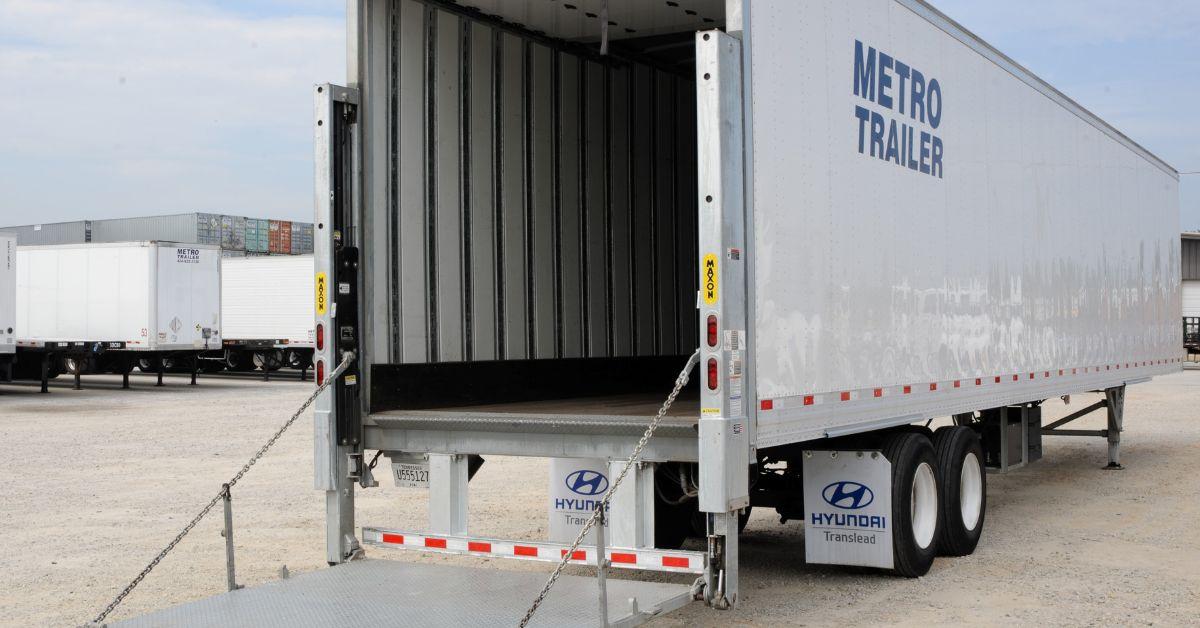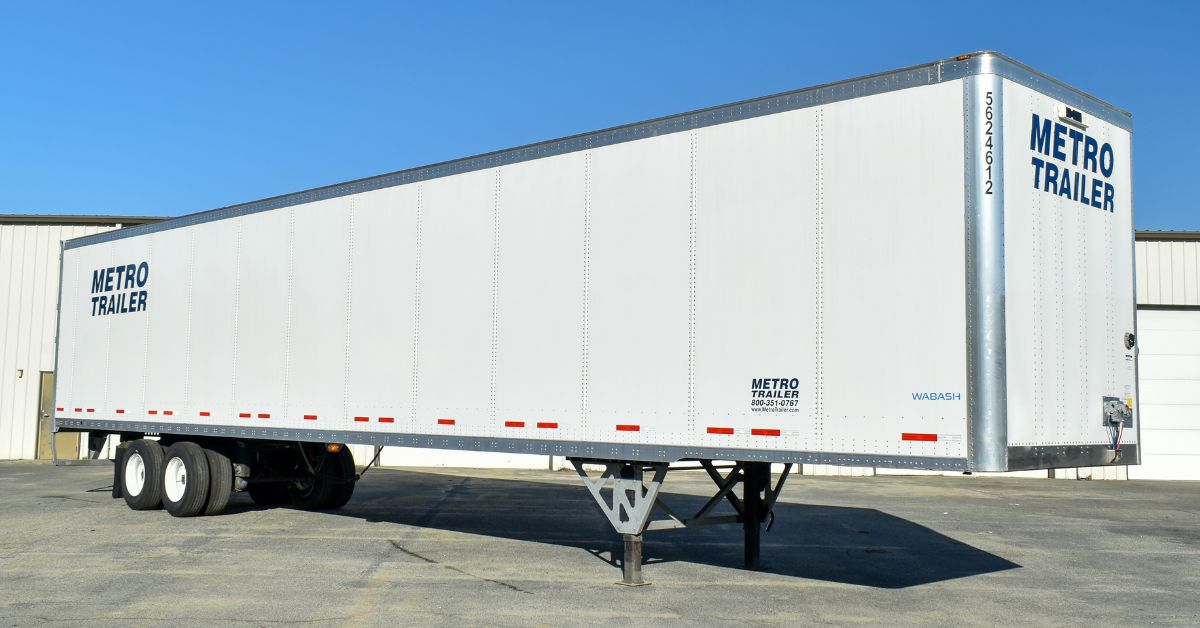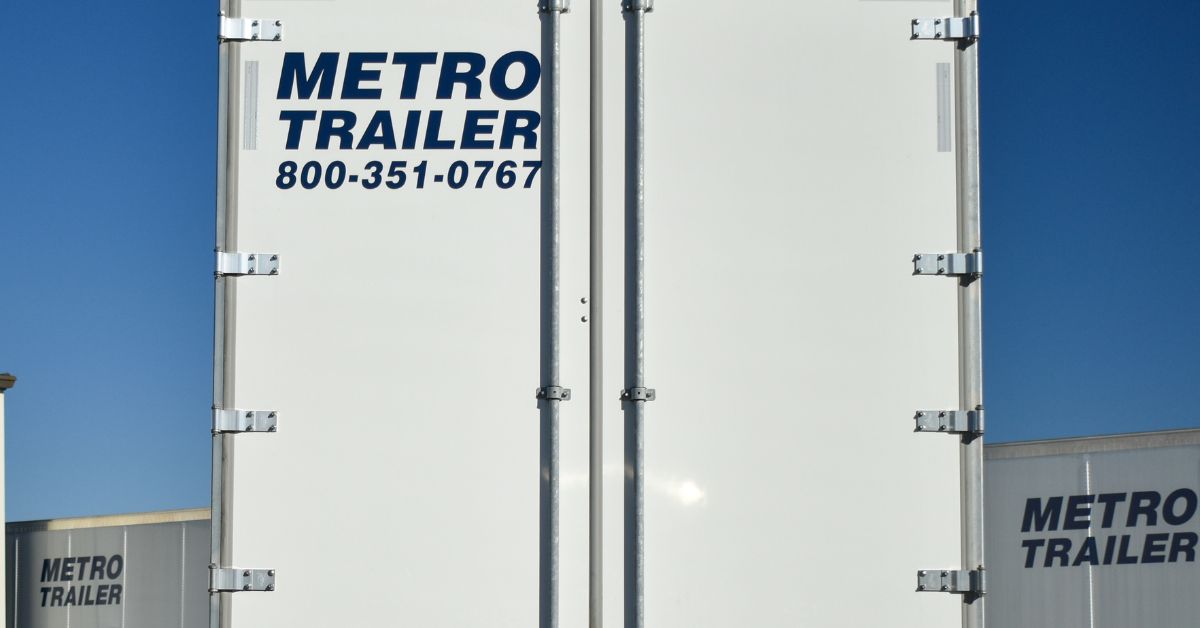
The Ultimate Guide to Loading and Unloading a Trailer Safely
Efficiency and safety are paramount in the shipping and trucking industry. Loading and unloading trailers are crucial parts of daily operations, but these tasks pose inherent risks if not handled properly.
Whether you manage a fleet or operate a single trailer, adhering to safe practices during loading and unloading can prevent accidents, protect your equipment, and save time and money. Following this guide to loading and unloading a trailer safely will help you support employee safety, ensure cargo doesn’t suffer damage, and guarantee you make your deliveries on time.
Understanding the Importance of Safety
Safety is the foundation of every successful shipping and trucking operation. Improper loading and unloading not only endangers the well-being of workers but also risks product damage, delivery delays, and regulation violations.
A well-loaded trailer ensures stability on the road, reducing the likelihood of accidents during transit. Similarly, unloading requires careful handling to prevent injuries or damage to the cargo. For trucking companies, prioritizing safety creates a trustworthy reputation and minimizes liability.
Federal regulations, such as those enforced by OSHA and FMCSA, outline safety practices for cargo handling and securement. Shipping companies that enforce strict adherence to these standards foster a culture of safety, reducing risks and maintaining compliance with industry regulations.
Preparing the Trailer and Work Area
Preparation is key before loading or unloading. Start by inspecting the trailer to ensure it is safe, clean, and well-maintained. Check for any signs of wear, damage, or instability in the trailer’s structure. Proper maintenance of the trailer ramps, doors, and floors is critical to prevent hazards during operations. If you find that your current trailers are insufficient for your current job, consider commercial trailer rentals to replace your old, failing equipment.
You should also prepare the work area surrounding the trailer. Ensure it is clear of debris, well-lit, and unobstructed. Workers need ample space to maneuver equipment and cargo efficiently. Mark off hazard zones where heavy machinery, such as forklifts, may be operating. Good preparation leads to smoother and safer loading and unloading processes.
Using Proper Equipment
The right tools and equipment are essential for safe loading and unloading. Depending on the nature of the cargo, this may include forklifts, hand trucks, pallet jacks, or conveyor systems. Verify that all equipment is in good working condition and that operators are thoroughly trained to use it.
For heavier loads, consider using restraints like straps, chains, or load bars. These secure the cargo in place during transit and ensure stability as it is loaded or unloaded. When using tools such as lift platforms, confirm their weight capacity and follow manufacturer guidelines to avoid overloading.
Personal protective equipment (PPE) offers another layer of safety for your workers. Items such as hard hats, gloves, steel-toed boots, and high-visibility vests reduce the risk of accidents and injuries in high-traffic loading areas.

Proper Loading Techniques
Cargo handling directly impacts the stability of the trailer and the safety of workers. Begin by distributing weight evenly throughout the trailer. Overloading one side can cause the trailer to become unbalanced, increasing the risk of tipping over. Use load distribution guidelines to position the heaviest items near the center of the trailer, ensuring a low center of gravity.
Stack cargo appropriately to avoid shifting during transit. Place heavier items on the bottom and lighter items on top to maintain balance. Secure all freight with straps or other restraints, especially when hauling loose items or cargo prone to movement. This prevents goods from shifting, maintaining the stability of the vehicle while on the road.
Additional care is required when loading hazardous materials. Ensure these are labeled properly and loaded in compliance with legal regulations to prevent environmental or safety incidents during transit.
Safe Unloading Practices
Unloading a trailer safely involves more than simply reversing the loading process. Start by carefully inspecting the trailer before opening it. Cargo may have shifted during transit, creating risks of falling items or destabilized loads. Open trailer doors cautiously, particularly when dealing with unsecured freight.
Plan the unloading process methodically, removing items strategically and avoiding excessive strain. Have workers lift with their legs instead of their backs to minimize the risk of injury. Do not rush the unloading process, as this increases the likelihood of accidents.
For companies using docks, verify that the dock levelers are secure and aligned before unloading begins. This ensures a stable surface for both workers and equipment. Additionally, clearly communicate with employees and equipment operators to avoid collisions or other mishaps.
Managing Risk
No matter how experienced your team or how routine the task, risks are always present in loading and unloading operations. Risk management practices minimize these dangers. Create and enforce standard operating procedures (SOPs) that detail each step of the process. Regular training programs for employees ensure that they are well-versed in these procedures and in spotting potential hazards.
Monitor conditions such as weather and lighting, which can impact operations. Rain, snow, or insufficient lighting increases the potential for slips, trips, and falls. Make adjustments to outdoor operations as needed to maintain safety.
Encouraging clear communication within your team is another essential component of risk management. Workers and equipment operators should always be aware of each other’s positions and responsibilities. Using clear signals or communication devices prevents misunderstandings that may lead to accidents.
The Role of Technology
Technological advancements have revolutionized loading and unloading, making it safer and more efficient. Automated systems, such as robotic pallet loaders, reduce reliance on manual labor and minimize the possibility of human error. Load sensors and weight-distribution technology balance cargo correctly, improving stability in trailers.
Tracking systems also allow companies to monitor the location and condition of cargo throughout the process. These systems contribute to transparency and reduce the risk of lost or damaged shipments. By investing in technology, trucking companies can enhance safety protocols and streamline operations.
Addressing Common Challenges
Despite careful planning, challenges can arise during loading and unloading. Tight schedules may create pressure to complete tasks quickly, increasing the temptation to bypass safety protocols. Companies should emphasize quality over speed, understanding that accidents cost far more in the long run than a delay.
Another common issue is poorly trained staff. Employees unfamiliar with equipment or SOPs are more likely to make mistakes. Providing ongoing training and certifying employees in equipment use reduces this risk. Knowledgeable staff members are better equipped to handle unexpected challenges that may arise during operations.
Building a Culture of Safety
For shipping and trucking companies, fostering a culture of safety is key to long-term success. Safety should not be an afterthought but an integrated part of everyday operations. Establishing regular safety meetings, conducting inspections, and rewarding employees for adhering to protocols are all ways to encourage a safety-first mindset.
Communicate the importance of safety from the top down by having leadership set a good example. Employees are more likely to take safety seriously when they see it prioritized by management. A workplace culture that values safety creates a more productive and loyal workforce, as employees feel valued and protected.

Establishing a Safe and Efficient Process
Knowing how to load and unload a trailer safely is a critical aspect of the shipping and trucking industry. By prioritizing preparation, following proper procedures, and equipping your team with the tools and knowledge they need, you can reduce risks and guarantee smooth operations.
Effective risk management and a dedication to safety not only protect employees and cargo but also strengthen your company’s reputation in the industry. With these practices in place, you’ll be well-equipped to handle any challenge that comes your way.